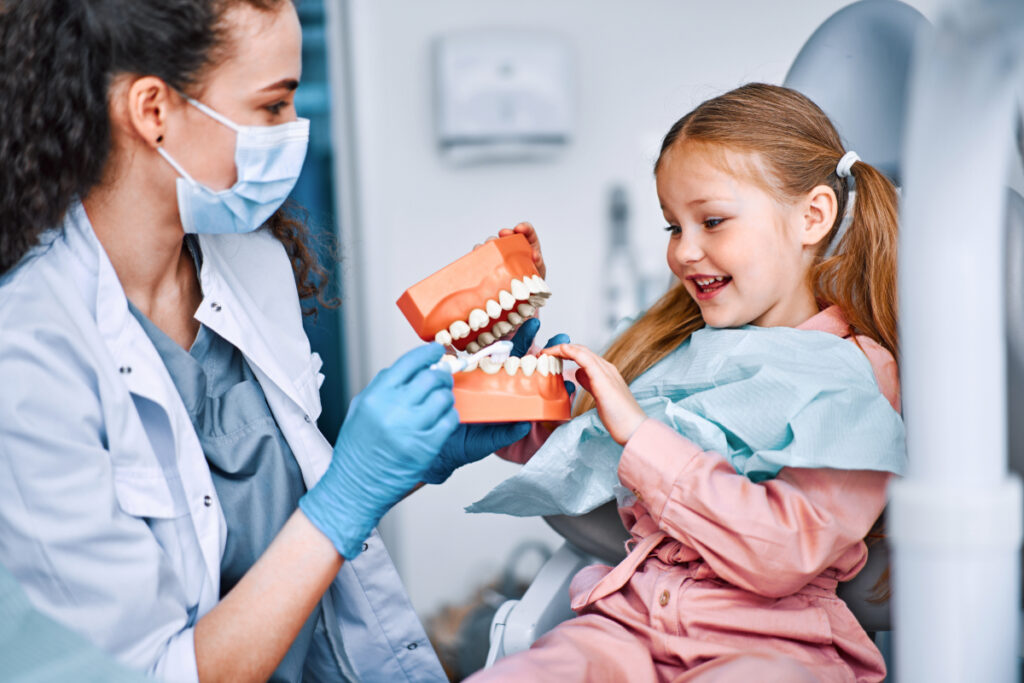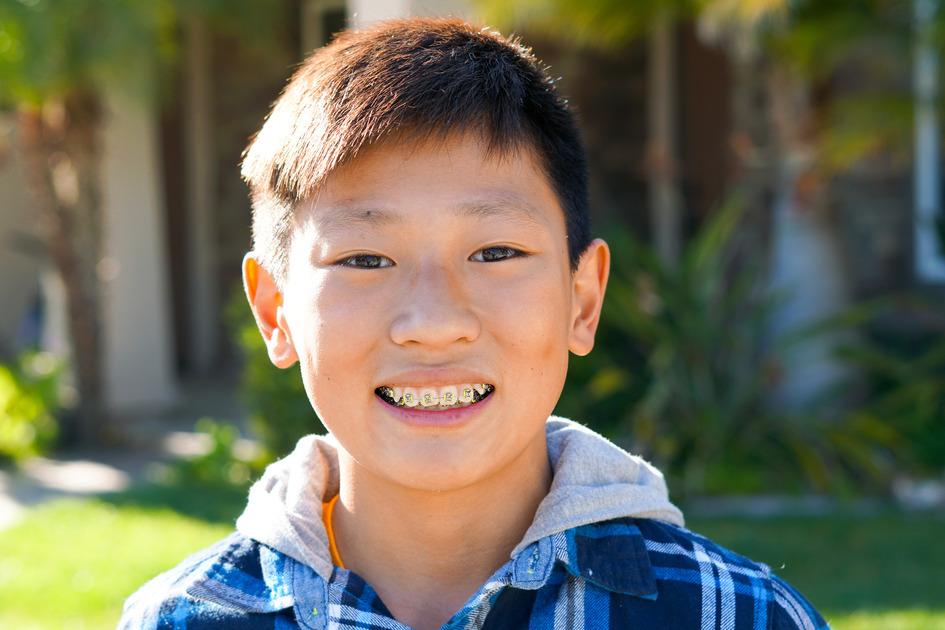Ever look at your child’s smile and wonder, “Are we supposed to do something about that yet?”
You’re not alone. Parents often worry about waiting too long, while adults quietly ask if they’ve missed their chance. The truth? There’s no magic birthday for braces. But knowing the usual timelines can make the whole process a lot less overwhelming.
Table of Contents
When to Start Thinking About Braces
Most orthodontists like to see kids around age 7, not to put braces on, but just to assess how things are lining up. Sometimes all they do is smile, say “Looking good,” and schedule a check-up in a year.
Have you noticed your child’s teeth overlapping or pushing forward? That’s often the first hint it’s time for an orthodontist’s opinion.
If nothing looks urgent, they’ll simply keep watch. Think of it like regular growth check-ups—but for smiles.
Why Ages 10 to 14 Are the “Sweet Spot”
By the time kids hit 10 to 14, most of their permanent teeth are in, and their jaws are still growing—which makes everything easier to guide.
| Age Range | Key Benefits |
| 10–14 years | Jaw still growing, teeth move faster |
| 11–15 years | Most permanent teeth present |
| Pre-teen/teen | Better cooperation and hygiene |
At this age, they’re usually old enough to handle brushing and flossing around brackets, yet young enough that their teeth move like warm butter. Miss that window, and things can still be fixed—it just takes a bit more patience.

What About Younger Kids?
Every so often, a child really benefits from early intervention between ages 7 and 10—what orthodontists call Phase I. It’s not about straightening every tooth yet. It’s about setting the stage.
Why it helps:
- Creates space for permanent teeth
- Guides jaw growth for better balance
- Lowers the chance of extractions later
- Gives shy kids an early confidence boost
Sometimes we see kids wearing little expanders or a few brackets on front teeth—more like warm-up gear than full braces.
Braces During the Teen Years
Teenagers are the classic braces crowd—and for good reason. All their adult teeth are in, and their jaws are still flexible, which makes everything move faster and with fewer hiccups.
Perks of getting braces during adolescence:
- Quicker results
- Shorter treatment time
- Lower risk of future jaw pain
- Strong success rates
And let’s be honest: it’s easier emotionally. Because so many of their classmates have braces, it just feels like part of growing up—not something to be embarrassed about. Getting ahead of bite issues now can also prevent bigger procedures, like jaw surgery, later on.

Adults Can Get Braces Too
If you’ve been putting it off, here’s the good news: there’s no expiration date on braces. Adults get great results all the time. The process might take a bit longer because your jawbones are done growing, but it’s absolutely doable.
| Type | Visibility | Removable | Cost |
| Metal Braces | Most visible | No | Lowest |
| Ceramic Braces | Less visible | No | Medium |
| Clear Aligners | Nearly invisible | Yes | Highest |
Many adults choose clear aligners like Invisalign because they’re discreet and easy to pop out during meals. Curious what they feel like? Our post on Invisalign pain covers what to expect and how to handle the first few days.
As long as your teeth and gums are healthy, orthodontics can work beautifully at any age.
How Braces Actually Work
At their core, braces use gentle, steady pressure to move teeth into better positions. Brackets are bonded to the teeth and connected by wires, which the orthodontist adjusts periodically to guide movement.
Common issues braces correct:
- Crowding and overlapping teeth
- Gaps or spacing problems
- Overbites, underbites, and crossbites
- Jaw misalignment
Treatment usually takes 18–24 months, though complex cases may take longer. If you’re wondering about aftercare, our guide to retainers after braces explains how to maintain your results for life.
The Orthodontist’s Role
Orthodontists are specialists who complete years of extra training beyond dental school. They diagnose alignment issues, create personalized treatment plans, and monitor progress closely during every adjustment.
They’re also your child’s biggest cheerleaders—teaching proper brushing, cheering on progress, and catching small problems before they become big ones. Think of your orthodontist as part coach, part smile-engineer.
Their key responsibilities include:
- Designing treatment plans
- Adjusting braces or aligners
- Educating on care routines
- Coordinating with your dentist if needed
Frequently Asked Questions
What is the typical age to start braces?
Most kids start between ages 10 and 14, after an initial evaluation around age 7 to spot potential issues early.
How late is too late for braces?
It’s never too late. Adults can get braces or aligners as long as teeth and gums are healthy. Treatment just takes a bit longer.
Do kids ever get braces before age 10?
Sometimes. Early treatment (Phase I) between ages 7–10 can address serious bite or crowding issues and reduce the need for extractions later.
Does age affect how long treatment takes?
Yes. Younger patients often finish sooner because their jaws are still developing. Adults can expect slightly longer timelines due to slower tooth movement.
Will insurance cover braces for adults?
Often not. Many dental plans cover orthodontics only for patients under 19. Adults typically pay out-of-pocket or use payment plans.
Ready to Talk About Braces?
Figuring out the right time for braces can feel overwhelming—but you don’t have to figure it out alone. A quick consultation can give you clarity and peace of mind about what’s best for your child (or for you).
???? Schedule a visit with Hulse Orthodontics to explore your options with a friendly, expert team who will guide you every step of the way.
The information provided in this blog is for educational and informational purposes only. It is not intended as a substitute for professional medical, or healthcare advice. Always consult with a qualified healthcare provider for diagnosis, treatment, and answers to specific medical questions.

Dr. Cameron Hulse grew up in Southern Orange County, California. While in his own orthodontic treatment in high school, Dr. Hulse realized how much his new smile changed him and decided he wanted to improve other’s teeth and smiles. Dr. Hulse pursued his dream and completed a BS in Zoology at Brigham Young University. Then he was selected to attend the University of Southern California’s prestigious School of Dentistry where he received his D.D.S.. After Dental School, he switched coasts and completed his orthodontic residency at Jacksonville University where he received his CAGS.


